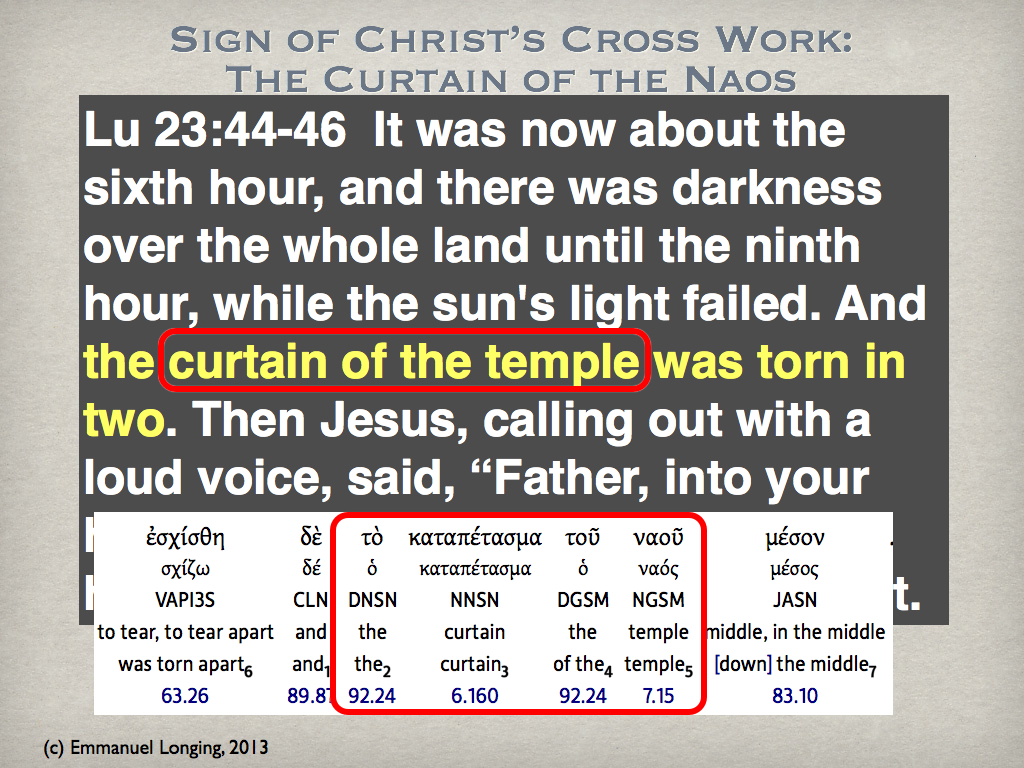Within the Temple there was a separate inner room known as the Holy of Holies. Solomon, following the design of his father David for the 1st Temple, built the Ark of the Covenant within the Holy of Holies, and in the Ark Solomon placed the stone Tablets of the Covenant (the 10 Commandments). After the Babylonian exile and the rebuilding of the Temple, making the so-called 2nd Temple, the Holy of Holies was reestablished but, significantly, the Covenant stones were lost in the captivity.
From the time of the Tabernacle built by Moses in the wilderness of Sinai, God’s Spirit was discernible by the people in a form described as a glowing cloud. The manifestation of God’s Spirit also appeared in the Temple in Jerusalem. This presence was the great confirmation of God’s favor toward the people of His Covenant. It was a shock to Israel when the Babylonians were able to conquer Jerusalem and desecrate the Temple. Even after its reconstruction after the end of the Babylonian exile, the Temple was later corrupted during the inter-Biblical period by a pagan king who deeply insulted the Jews and their faith by offering a pig on the very altar of the Lord. It is unknown to us whether God’s Spirit was manifest in and about the Holy of Holies at the time of Christ. Regardless the priest and the leaders took as their solemn responsibility maintaining the holiness of the Temple and especially that innermost room.
In the Greek version of the Old Testament, the Septuagint (abbreviated as LXX), and in the New Testament (which was written in the original in Greek), the innermost room, the Holy of Holies, of the Temple was called the “naos” (pronounced NOW-ohs).
All this is essential background to understand the outcome of Christ’s work on the Cross. In Luke’s Gospel, we learn of a significant event occurring at the closing moments of Christ’s human life, as given below: Shown in the red box is the Greek text with its translation, namely the curtain of the naos (Gr: ) was torn apart, as though, the Spirit of God within it, burst forth from it, breaking open the curtain. This must have been a shock to the priests and Jewish leaders because the naos (the Holy of Holies) was forbidden for viewing or entrance to everyone but the high priest and he could enter only once a year, during the Day of Atonement (Yom Kippur) and only in special vestments and only upon purifying sacrifices.
Shown in the red box is the Greek text with its translation, namely the curtain of the naos (Gr: ) was torn apart, as though, the Spirit of God within it, burst forth from it, breaking open the curtain. This must have been a shock to the priests and Jewish leaders because the naos (the Holy of Holies) was forbidden for viewing or entrance to everyone but the high priest and he could enter only once a year, during the Day of Atonement (Yom Kippur) and only in special vestments and only upon purifying sacrifices.
What might this mean? Well, the New Testament tells us: God’s Spirit has been released upon the full and final payment for sin by Christ, and the Spirit moves to be in (shockingly) us. Namely, we become the very naos of God.
Now let us turn to the ministry of the Holy Spirit of God, unleashed for our benefit upon the completion of the Work of Christ on the Cross.